Buried Cheese is an old Assyrian recipe! Cheese is mixed with various seeds, and buried until aged to perfection. I'll show you the easy way to make "buried" cheese, with no burial required! Assyrian buried cheese is traditionally served with Middle Eastern pita bread and tea for breakfast.
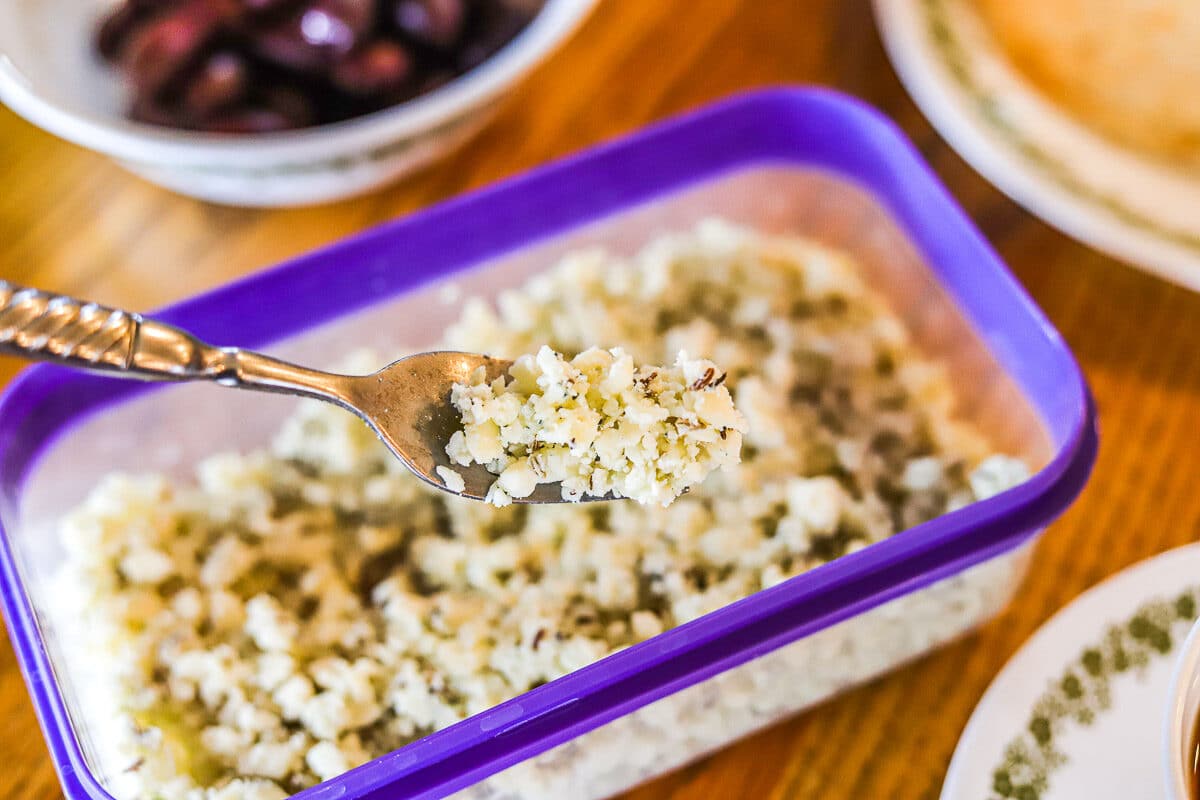
"Buried cheese?" Yes, buried cheese! That's a direct translation of its Assyrian name, "Joopta Doomirtah." But don't worry, I won't ask you to bury anything, I promise! The name "buried cheese" simply describes how this cheese used to be prepared in Iraq in the old days.
The way my mom explained it, a large clay jar would be filled with a mixture of cheese and spices. The jar would then be topped with sheep's wool and covered with muslin. Finally, mud was smeared over the muslin to seal the jar.
The jar was then buried in the earth upside down. Over time, the wool would absorb the excess oil that drained from the cheese. During the summer months, the jar was watered regularly to keep cool. Come winter, the jar would finally be unearthed, revealing the "buried cheese" which was ready to enjoy.
At this point, the jar would be turned right side up and returned to the ground to keep cool. They didn't have refrigerators back then, you know! The jar would be accessed every morning to remove enough cheese for that day's breakfast. The cool ground not only kept the cheese from spoiling but also gave the cheese an earthy flavor.
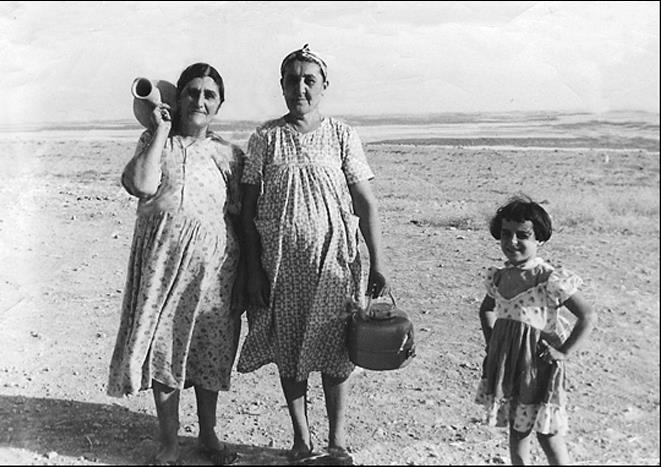
Jump to:
🛒 What You Need For This Recipe
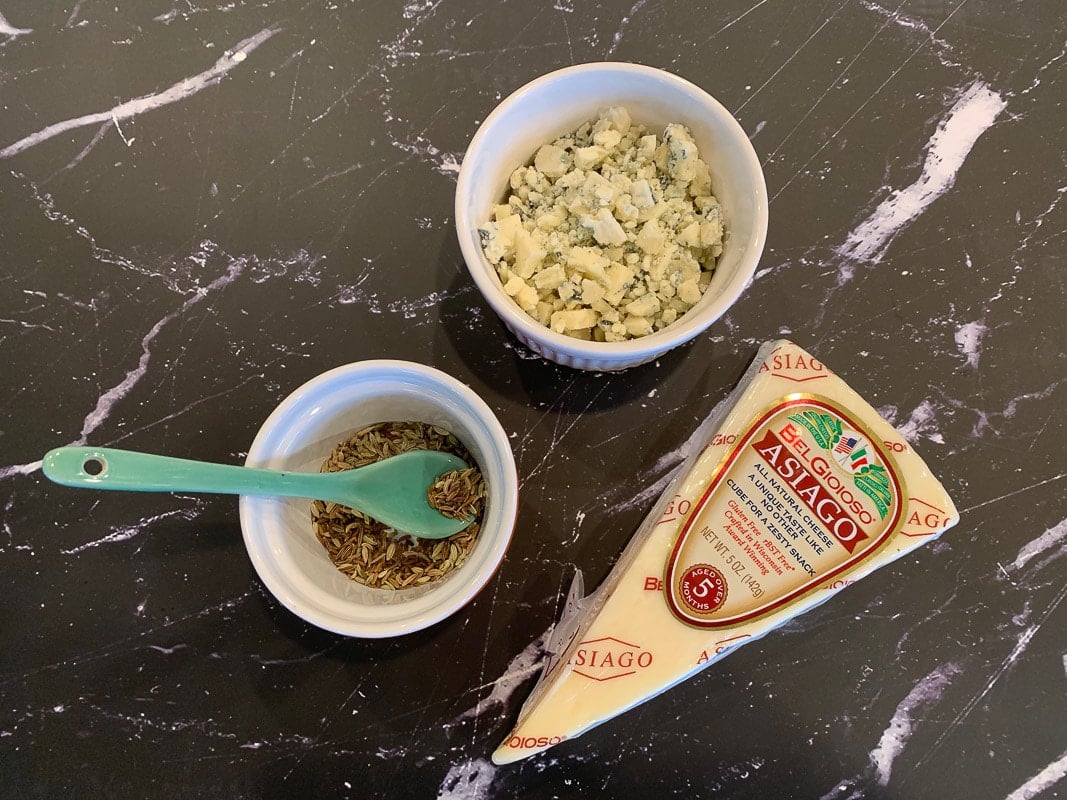
🔖 Ingredients & Substitutions
- Cheese: The main ingredient is cheese, and in this case, either Asiago or Kasseri cheese will do. They both have a similar flavor to whatever cheese was used in Iraq to make buried cheese. I like to also add some gorgonzola or blue cheese to give the cheese that earthy, dare I say moldy flavor? Trust me, it works!
- Seeds: I think most families have their own seed mixture to flavor the cheese. Some include cumin and fennel, while others have caraway and cumin. For my recipe, you will need cumin, caraway, and anise seeds.
🧀 How to Make Buried Cheese
Step 1: Grate Asiago cheese using a grater or a food processor. Add gorgonzola, if using.
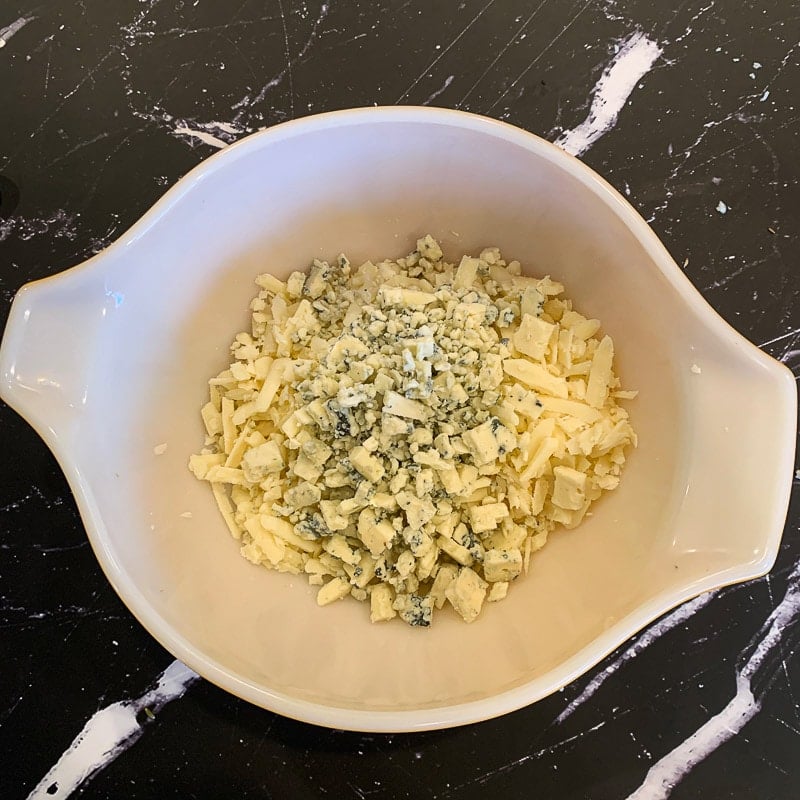
Step 2: Soak the anise, caraway, and cumin seeds in water for 10 minutes to allow them to soften.
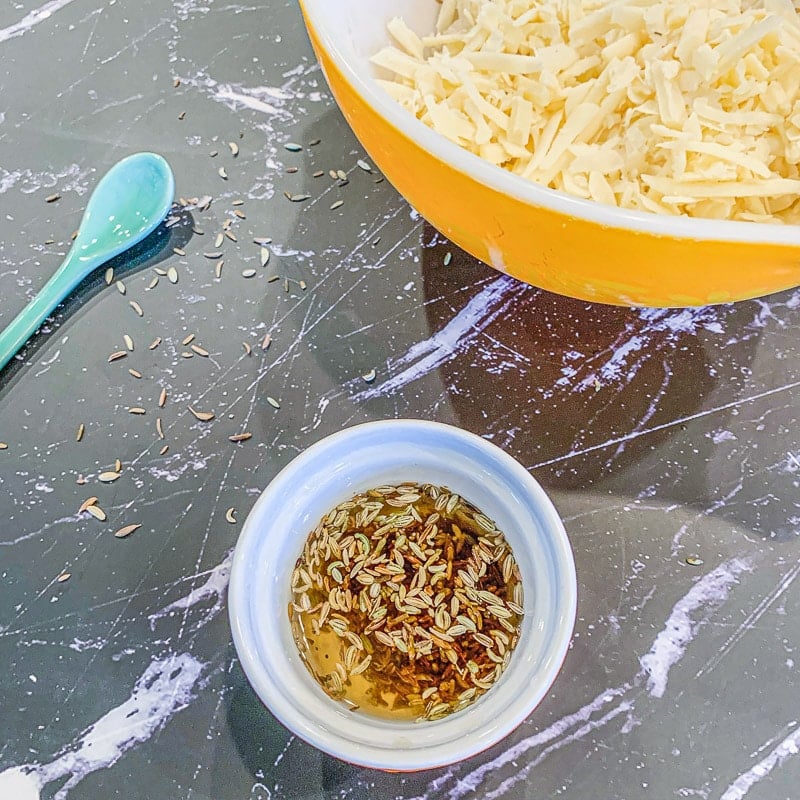
Would you like to save this recipe?
Step 3: Drain the seeds, pat dry with a paper towel, and add to the cheese mix.
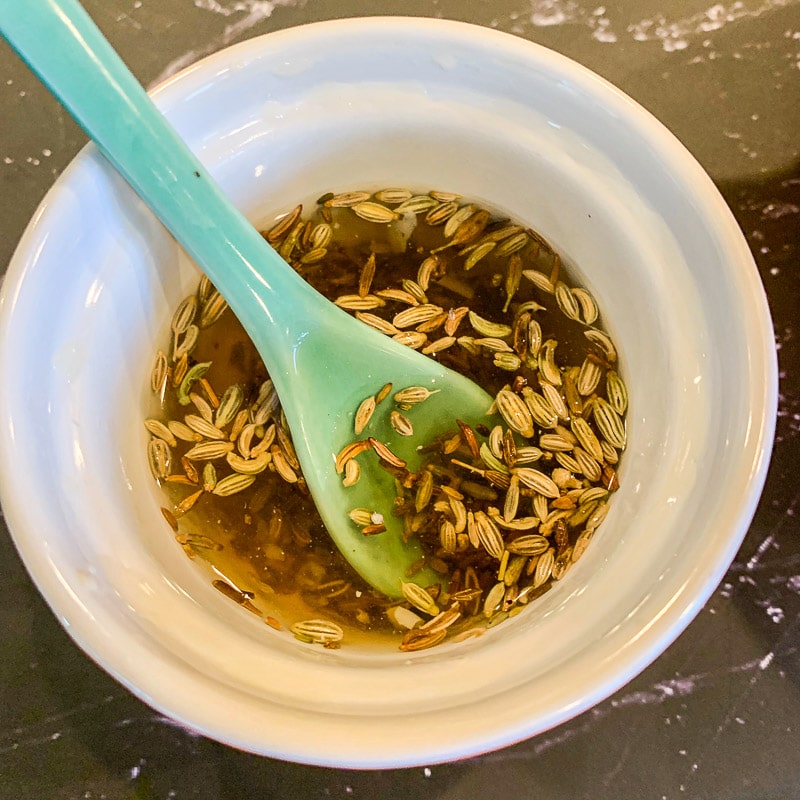
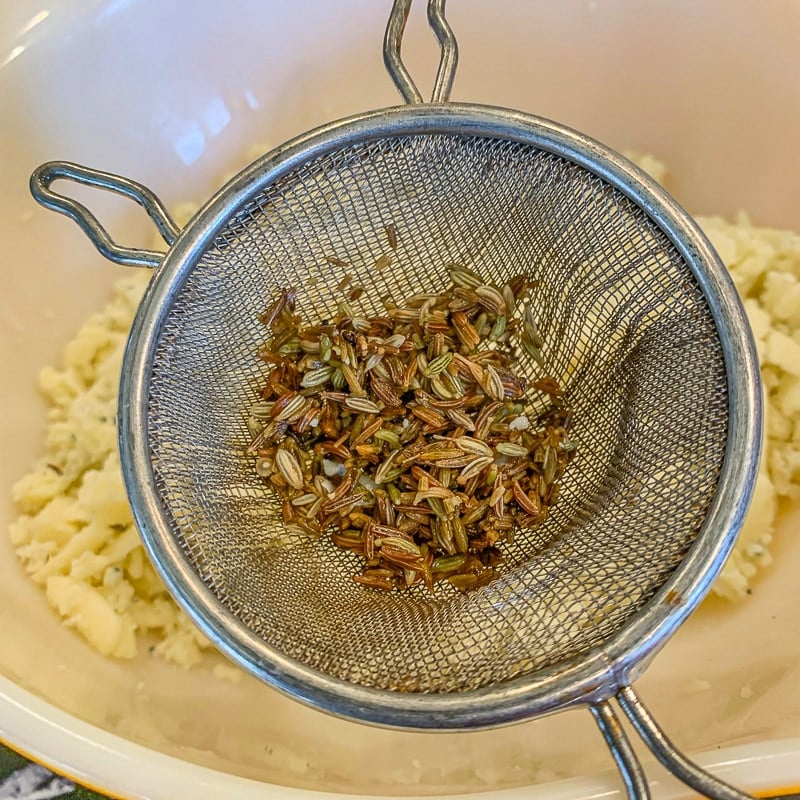
Step 4: Grab handfuls of cheese and seeds and rub between your hands to infuse the seed flavor into the cheese. Continue until the cheese begins to clump together.
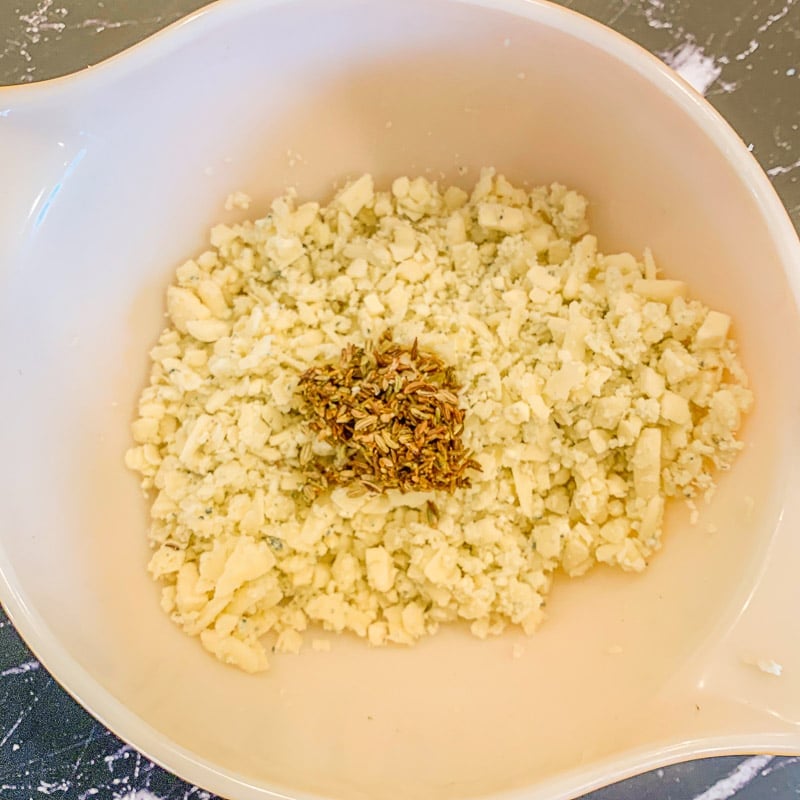
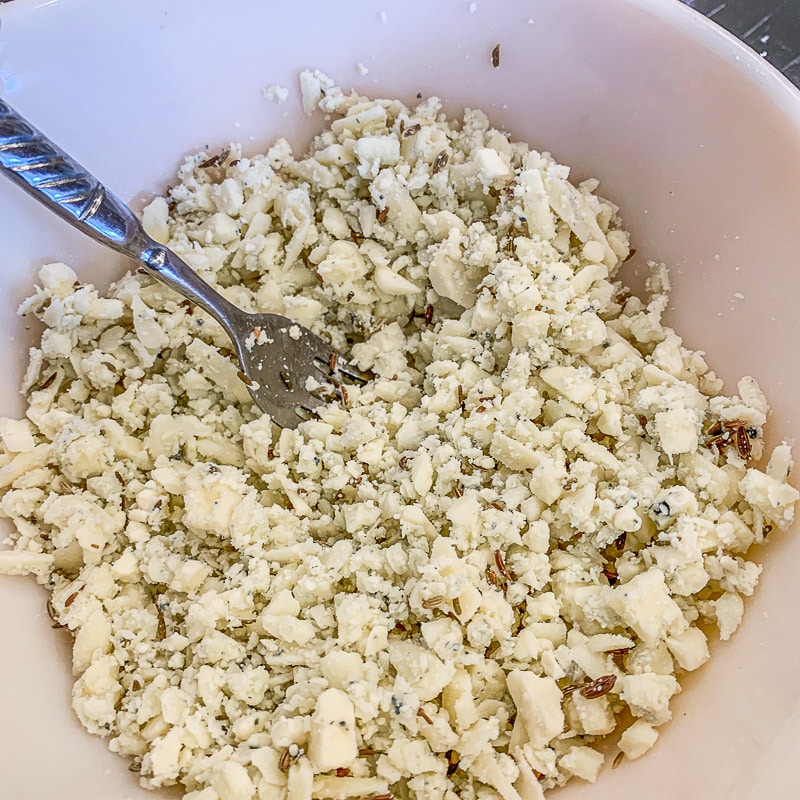
Pro Tip: An even easier way to do this is to pulse the cheese mixture a few times in a food processor. This will also grind the seeds into the cheese and release their flavor.
Step 5: Pour the Assyrian cheese into a glass jar or a plastic container. Press down with your hands to compact the cheese. Why? Because that's what mom did, don't question mom!
🍽 Serving Suggestions
To serve, simply spoon a few tablespoons of cheese into toasted pita pockets. Serve with kalamata olives and hot Assyrian chai.
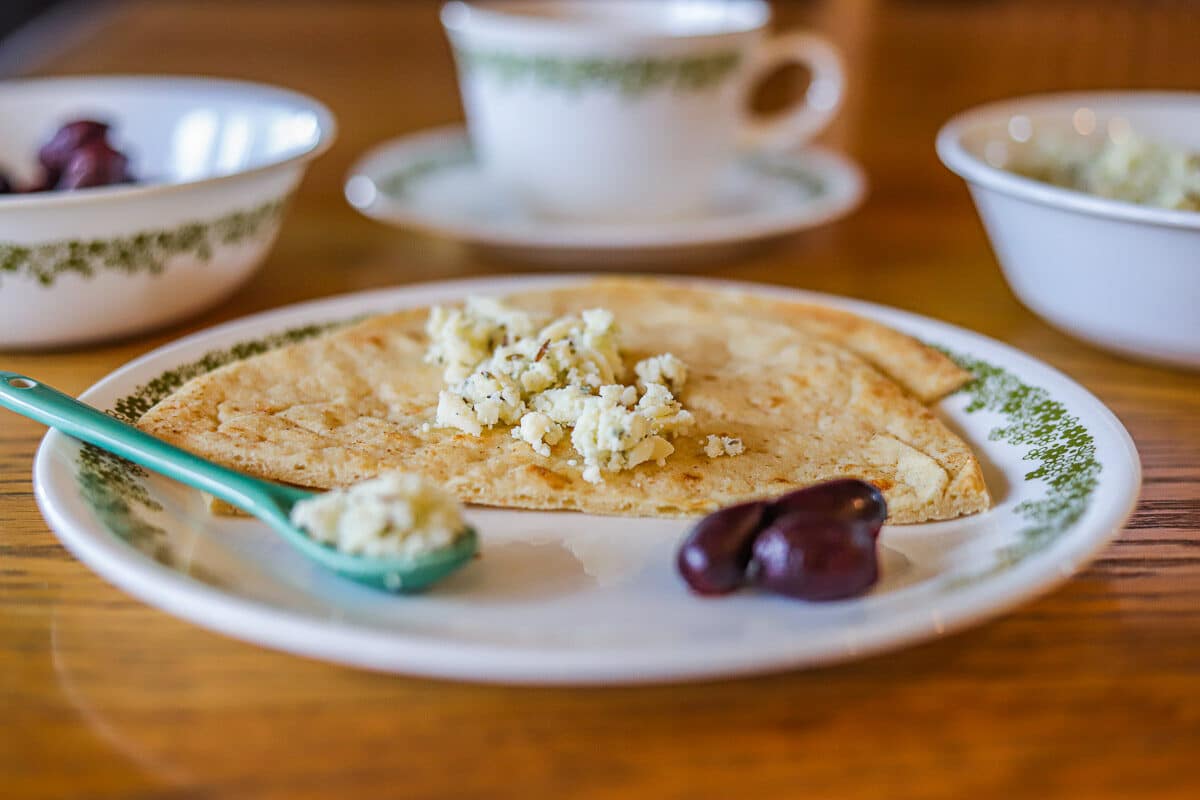
👩🏼🍳 Pro Tips
- Store the buried cheese in an airtight container for up to a month.
- Although not traditional, buried cheese also goes great on pizza, especially shawarma pizza.
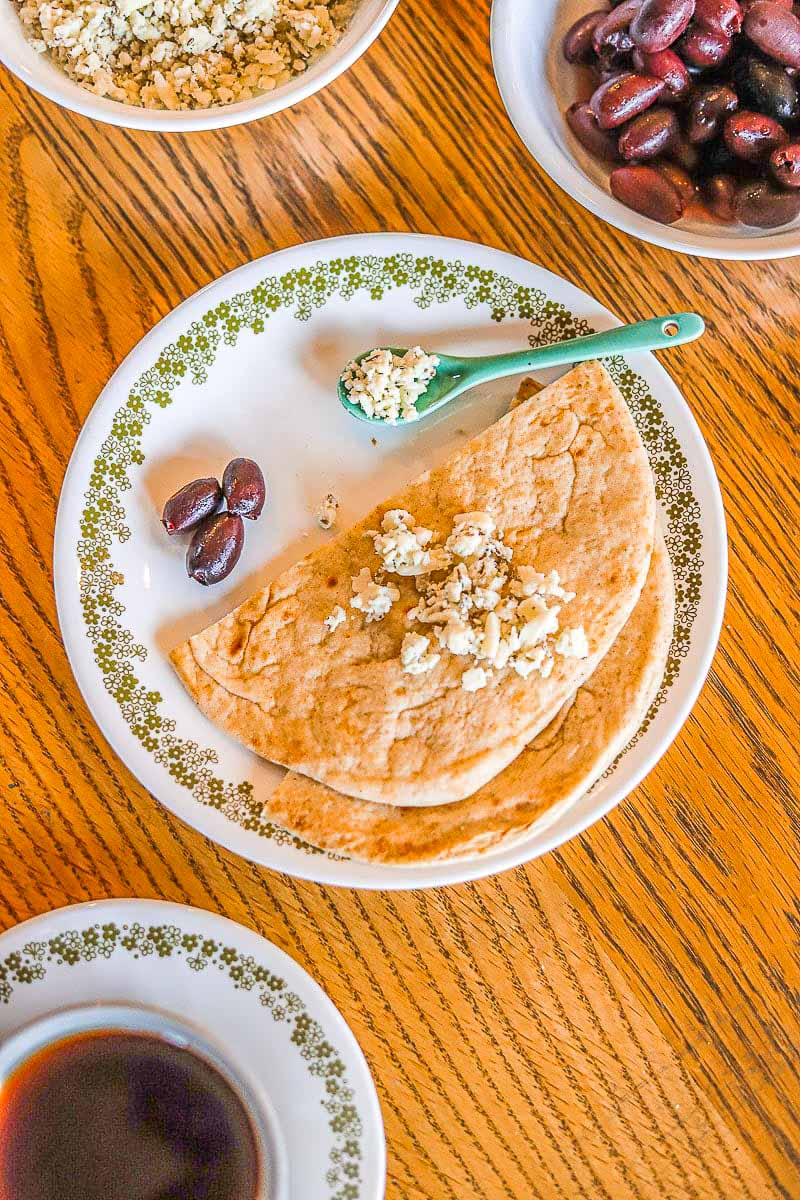
🥚More Breakfast Recipes
📖 Recipe
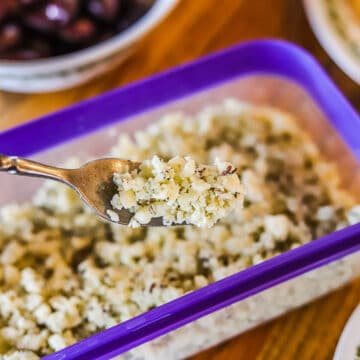
Buried Cheese (Joopta Doomirtah)
Ingredients
- 1 teaspoon anise seeds
- 1 teaspoon caraway seeds
- 1 teaspoon cumin seeds
- 8 ounces Asiago or kasseri cheese (or a combination of both)
- 4 ounces gorgonzola cheese (or additional Asiago/Kasseri)
Instructions
- Grate the cheese using a medium grater or a food processor. Add gorgonzola, if using.
- Soak the anise, caraway, and cumin seeds in water for 10 minutes, to soften.
- Drain the seeds, pat dry with a paper towel, and add to the cheese.
- Grab handfuls of the cheese and seeds and rub between your hands, and drop back into the bowl. Or use a fork in a similar fashion to cutting butter into flour when making a pastry crust. Continue doing this until the cheese no longer resembles grated cheese and begins to clump together. This process helps the flavors of the seeds to infuse into the cheese.
- Pour the cheese into a glass jar or a plastic container. Press down with your hands to compact the cheese. Why? Because that's what mom did, don't question mom!
- To serve, simply spoon a few tablespoons of cheese into toasted pita bread pockets. Serve with Kalamata olives and hot tea.
Notes
- Store the buried cheese in an airtight container for up to a month.
- Although not traditional, buried cheese also goes great on pizza, especially shawarma pizza.
Nutrition
This recipe was originally published on 1/1/2018. It was updated on 3/2/2020 by adding more information, new pictures, and reducing the portion sizes.



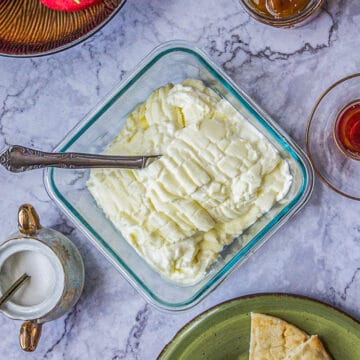
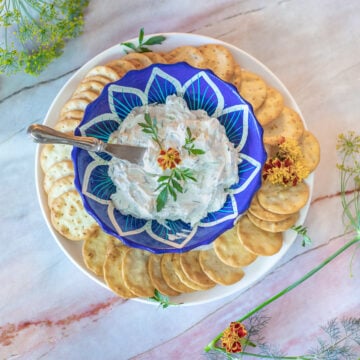
Zaya Toma says
Hi Hilda,
Do you know how the cheese was made to make this?
I know for convenience you can use an aged cheese with cumin seeds to get that taste immediately, but what if you wanted to make the actual cheese and bury it so that it ages.
Zaya
Hilda Sterner says
Hi Zaya, If only I knew that recipe, I would have posted it for sure. Unfortunately, my mom never explained exactly what the recipe was, just the process of burying it in the jars etc. I would love to learn how to actually make the cheese as well and if I ever find out, I will share what I learn!
Cynthia Donahey says
People buried in different ways. root cellars, wells, a secret ledge in the cellar, natural caves, etc. These did not freeze in the winter. Water is supposedly at its best at around fifty degrees. People used crumble or naturally decayed wood and sand. this is not the same as dirt.They were very secretive about it, because of theft to include family members.. You can dig down a certain depth and get things cool. You can store actual plants, vegetables etc. A spring with wet stone was ideal unless it became contaminated. And of course, people made or bought ice. Miners did incredible things.
Hilda Sterner says
Yes, I imagine there were many ways to accomplish this. I shared how my parents and grandparents did it, but I'm sure there's more than one way to bury cheese. 😉 Thank you for the additional info!
David Warda says
On her back porch, steps that led to the basement had a plot of earth underneath. There my grandmother buried the cheese. It was golden yellow, pungent, and a staple on her breakfast table. Thanks for the memory jog.
Hilda Sterner says
Hi David, I love that you know the actual location of the buried cheese. I wish I had similar memories. Instead, I just repeat the memories shared by my mother. Thank you for leaving a comment! ❤️
Hala says
Hello Hilda
I’m your fan from Instagram
I tried your keba Halab it was amazing
I will try this recipe too
HildaSterner says
Hi Hala,
I recognized your name, thanks for stopping by! I'm glad you enjoyed the kubba and I really appreciate your comment. Please let me know what you think of the buried cheese!